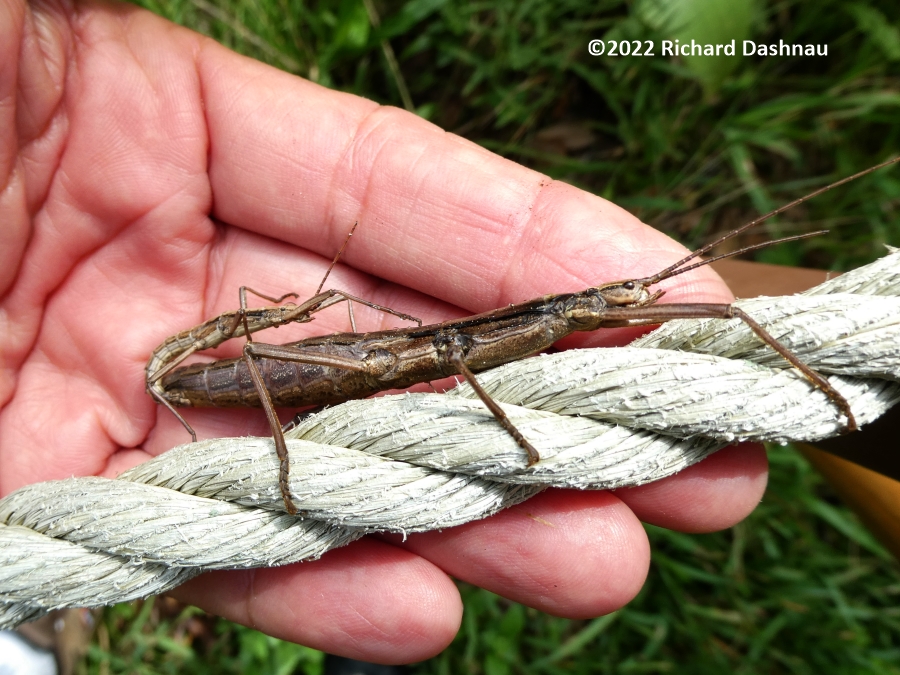
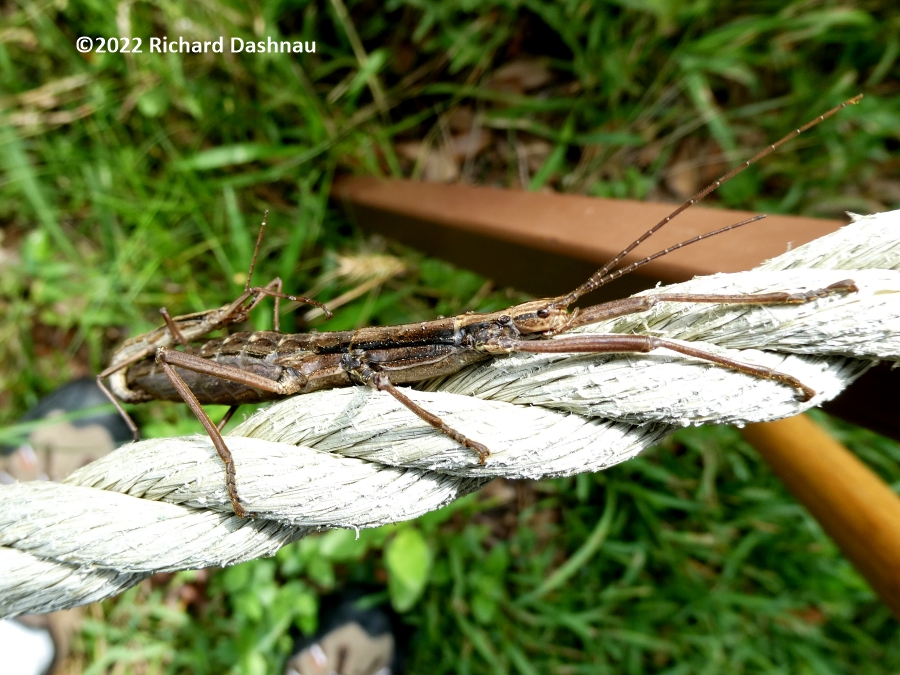
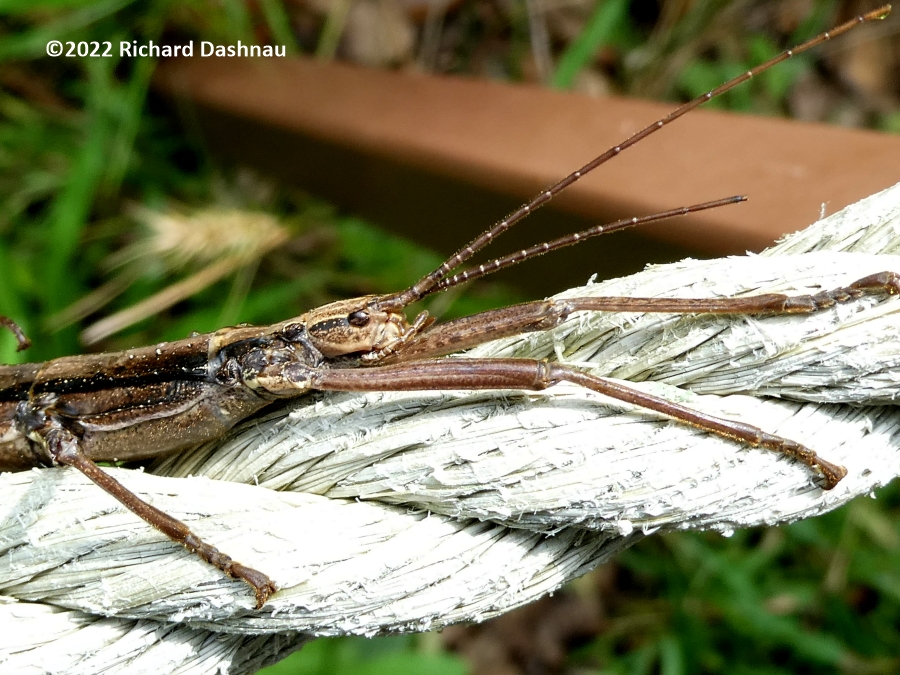
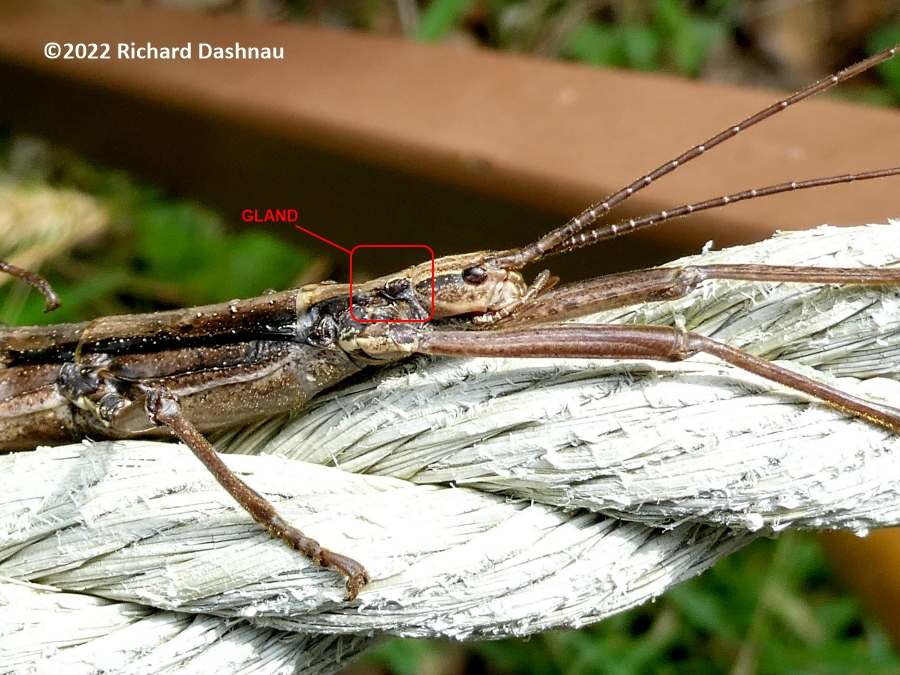
August
5, 2022 I was walking around Russ Pitman Park (near the Discovery
Center), when I saw something odd on one of the ropes edging the trail.
It was a Two-Lined walkingstick!
(aka Southern Walkingstick) Anisomorpha buprestoides. Or, actually, a pair of walkingsticks, because a male was riding on the female, as they often do in this species. I've quoted some
information
from a book by Thomas Eisner at an earlier time. I've also found his
first description: "Eisner, T. 1965. Defensive spray of a phasmid
insect. Science 148: 966-968".
The
glands are located just behind the head, visible under an oval-shaped
opening in the carapace. The spray is a terpene dialdehyde named
"anisorphal". They can accurately spray in any
direction and reach
up to 40cm (15 in). They can shoot 5 times through both glands, and it
takes 7 to 15 days to refill the supply. Anisomorpha usually
won't spray at most animals unless they
are attacked, but they have
been observed spraying birds while the birds were over 10 inches away.
They have the ability to spray as soon as they hatch.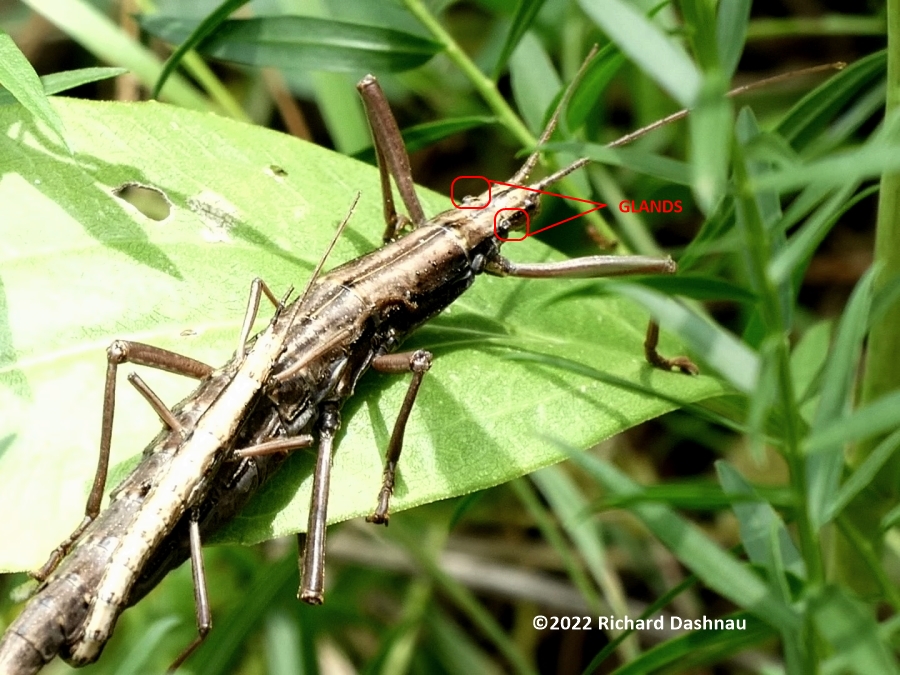
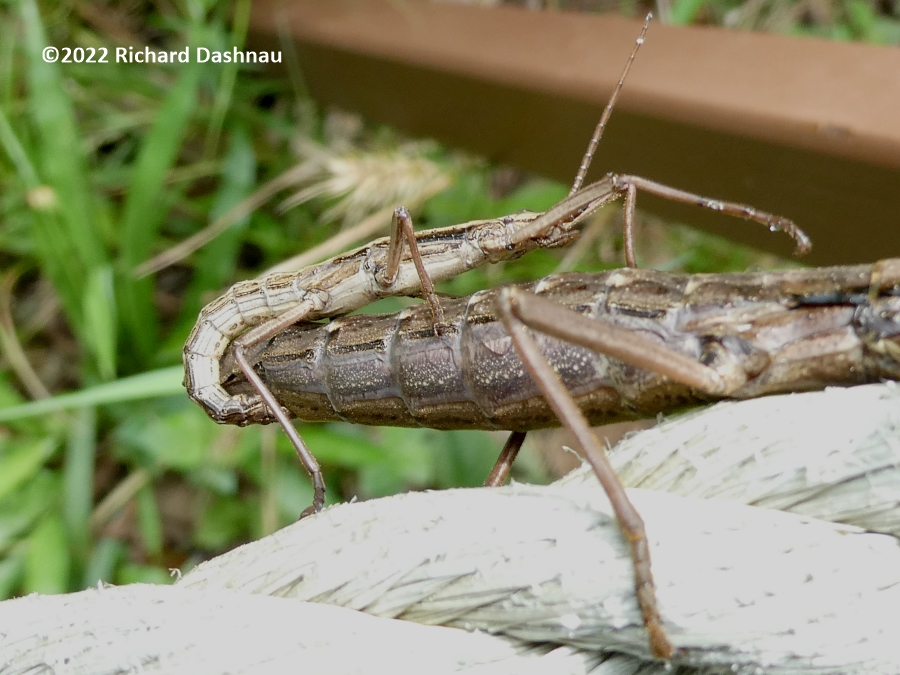
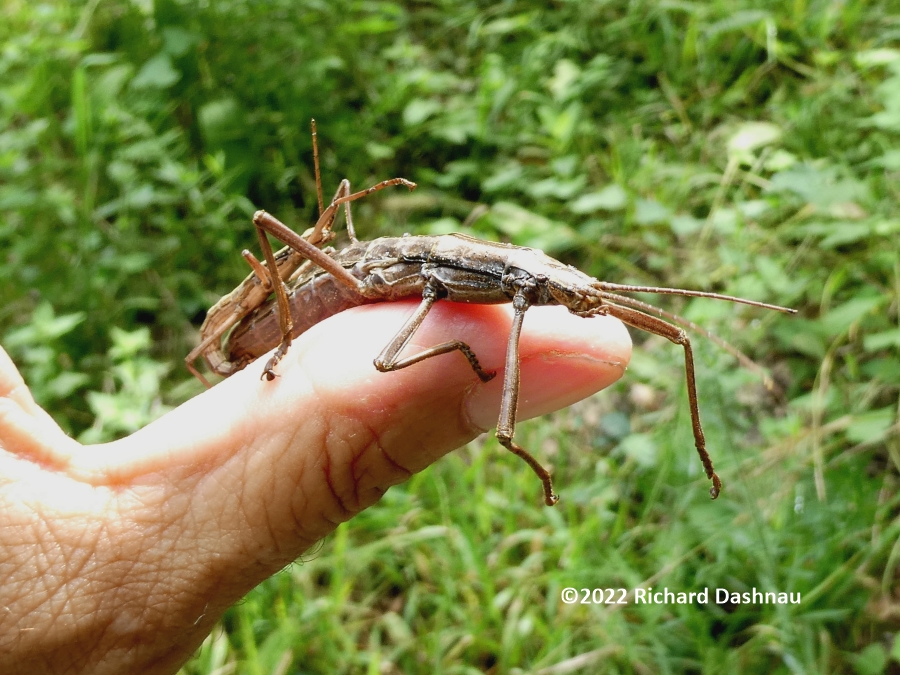
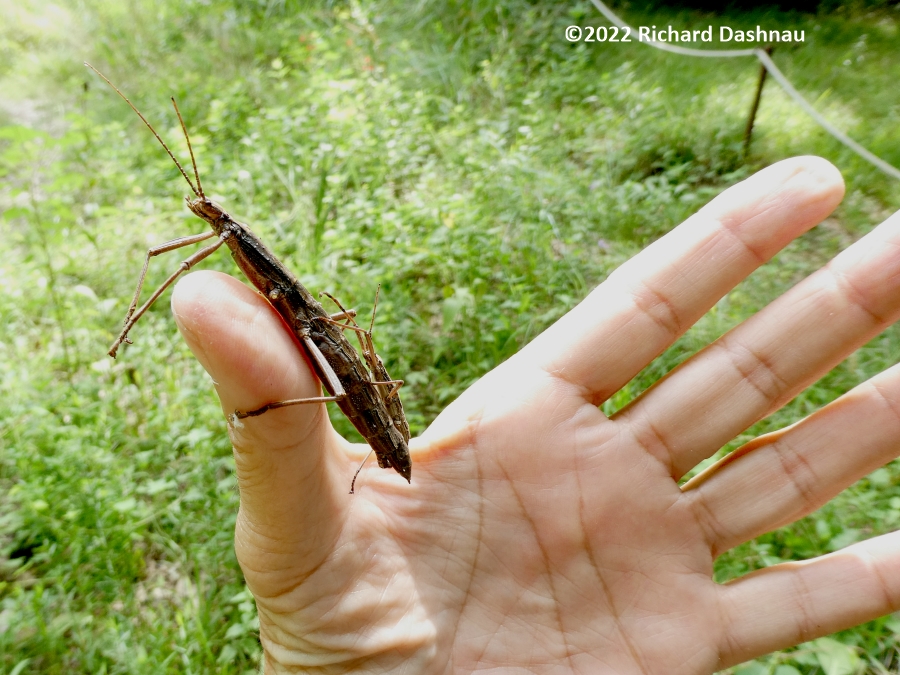
The
spray is used as a deterrent, and can be triggered by a threat to the
insect. I avoided such a defensive response by allowing the
walkingstick to crawl onto my hand instead of trying to
catch it. I
took a few pictures, and some video, then released by putting down
into cover. There was no point in leaving it where insectivores like
birds could find it. The video clip is here (mp4). 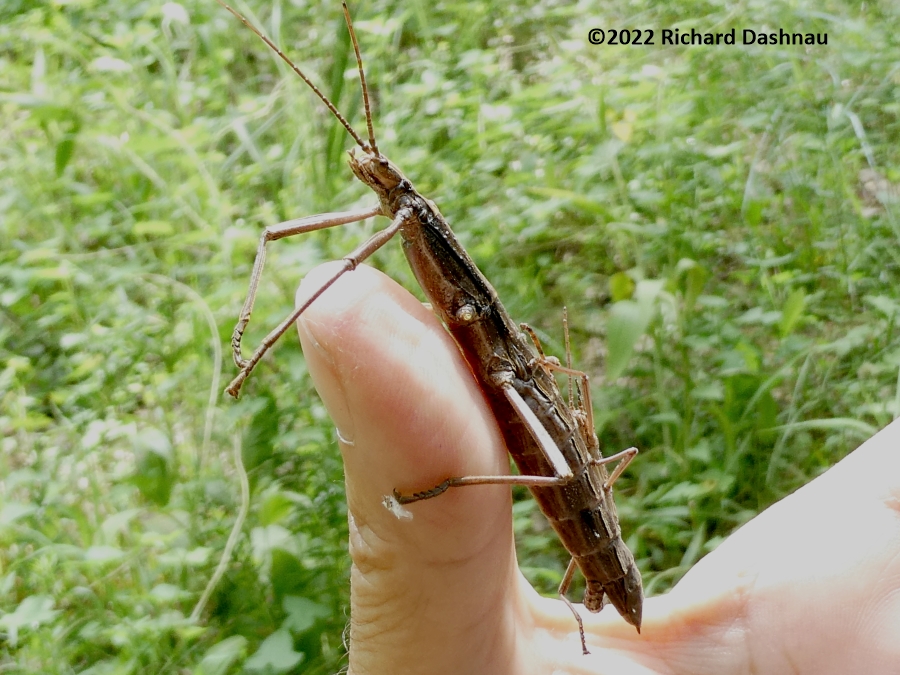
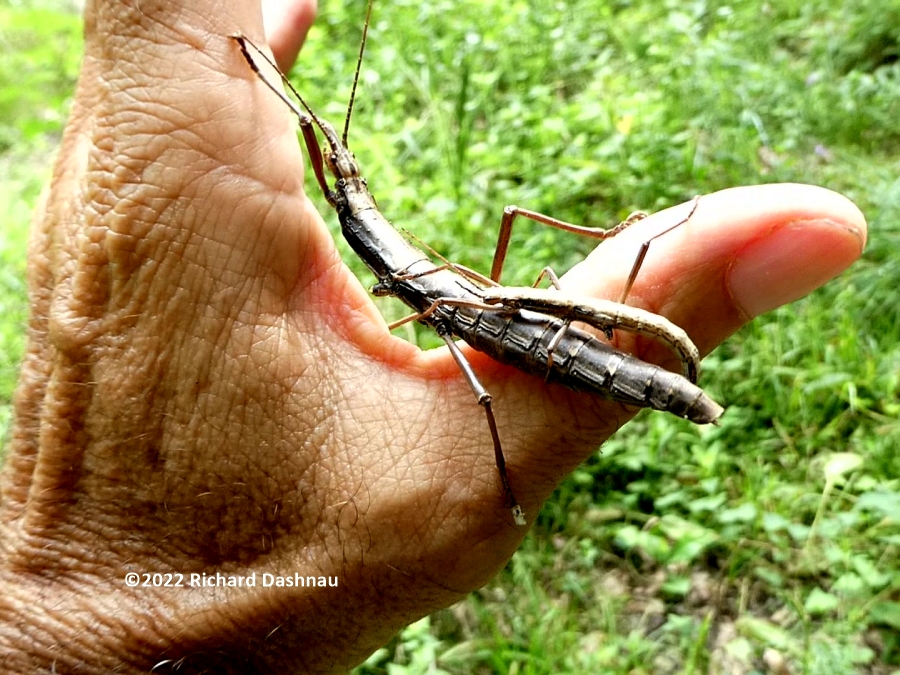
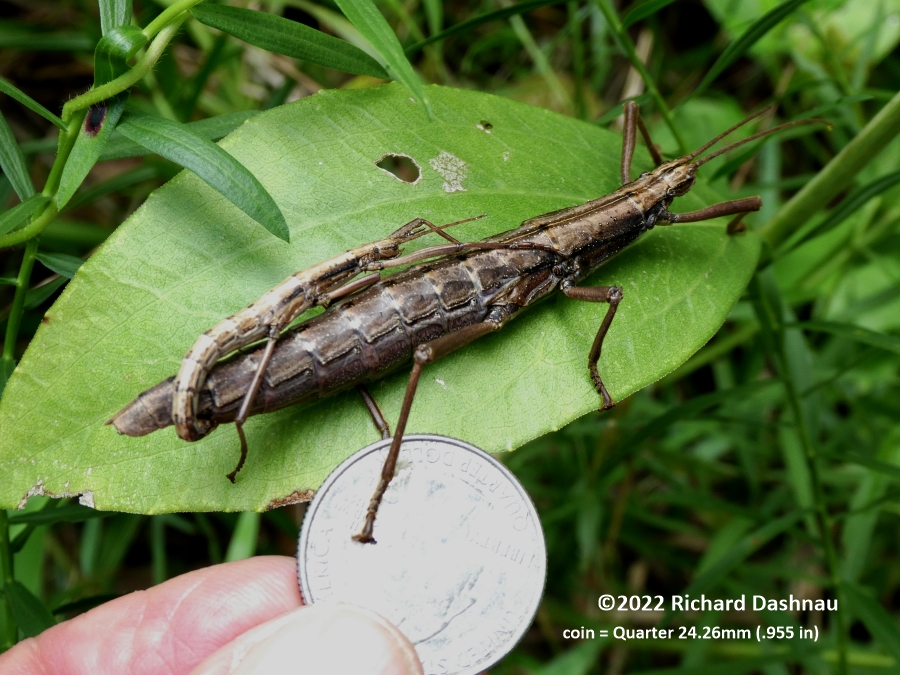
June 22, 2002 It moved
with slow deliberation. It was a fine example of adaptation and camouflage.
It's large size was well hidden by the shapes and colors which eons of
evolution had
molded into its chitinous body. The male of its species,
much smaller than the female, remained attached to the female-much like
a parasite-through most of its lifetime. The female also had the ability
to spray acid at anything that disturbed it. I watched it with some trepidation,
wondering how I could safely move this surprise guest from our vicinity
without any harm befalling me, or it.
That sounds almost like something from a science fiction story, doesn't it? Well, it wasn't. I wrote it. And I was writing about something that had infiltrated my friend's house.
Sometime
around June 12, 2002, I had sent the following as an email attachment to
my fellow BBSP (Brazos Bend State Park) volunteers:
"Sometimes
the most innocent little event can really teach you something!
Glen probably already knows what I'm going to talk about...but *I* didn't.
At the BBSP Visitor's Center, we
currently have a large walking stick insect.
I guess it was caught in the park, if I remember what David said
correctly. Then Ken recounted a run-in he'd had with a "heavy-bodied"
walking stick that he found out secreted a very acidic substance.
(You've got to listen to Ken. He's got all kinds of nuggets like
this.) David and I looked for some kind of identity for this
creature.
That's when I discovered there were *many* species of stick insects. Maybe
everyone else knew this...but I didn't. Then, a search on the Internet
brought up a species:
Anisomorpha
bupestroides
...and
a common name, "American Walking Stick". This was described as a
heavy-bodied Phasmid (phasmids are
insects
that emulate plant forms by growing their exoskeletons to resemble plants
in shape and color), with a male about 1/2 the size of the female.
This insect can secrete a powerful
irritant that can cause temporary blindness.
Now, this evening, a further search has uncovered a *different* common
name: Two-striped walkingstick. I'd only found one picture before.
Here
is a link that shows a group of pictures of these insects."
http://www.bugsincyberspace.com/anisomorpha_buprestoides.html
I got
an answer from a different volunteer which told of their experience
with these same insects. These folks, however, had had a group of them
which reproduced, and while releasing the
last "original" female, their
5 year old child was burned when it crawled up on his shoulder and he posed
for a picture. So, the Ken incident above (where he'd moved one off a tire
stem by
pushing it with a tire gage, and then placed the gage in his
mouth while filling the tire and discovered the acid) and this one both
seem to verify this walking stick's acidic nature.
Then,
near June 22nd, which was 10 days after the email I'd sent, I was
at Donna's house, and it was time to close up everything. As I checked
one of the doors, I looked down, and there on
the door molding was one
of the walkingsticks! Donna had said that they were common there. We captured
it, and I waited until the next morning to examine my "prize". Next
morning, I
carefully took some pictures of my own. I haven't figured out
a safe way to test this creature's acidity, but I will. NO,
any test that requires using myself as a subject is not acceptable;
just in
case anyone out there was going to suggest it. So, here are
my pictures. By the way, after I'd released this pair from the end of the
porch, I walked to the back door and found another pair
waiting
for me! This walking stick is not the type that we'd had at the park
which prompted this entire investigation.
-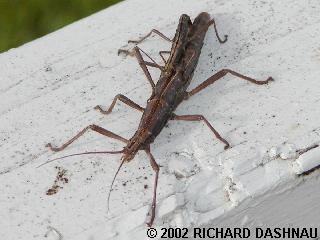 -
-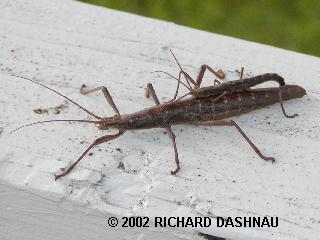 -
-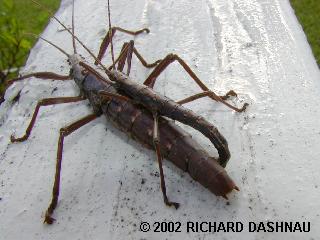 -
-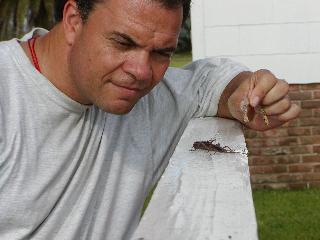
FRONT
SIDE
REAR
WHAT THE HELL AM I DOING?
Sometime
in 2005, I read the book For Love of Insects, by Thomas Eisner.
On pages 83-89 of the hardcover edition there is more information on this
insect.
Dr.
Eisner calls it a "devil's rider". According to the book, this insect
can spray up to 40 (15.75 inches) centimeters. The spray can be aimed
in all directions. The walkingstick was observed
by Dr. Eisner to spray
when touched. Also, the only time this walkingstick sprays when approached
is when a bird (not something bird-shaped, but a real bird) approaches
within 20 (7.8 inches)
centimeters of the insect and the spray is used
as a pre-emptive defense. Obviously, I didn't see or smell such defense,
and I was probably lucky for that. In some of Dr. Eisner's experiments,
a
live bird (which was unfamiliar with the anisomorpha) was presented with
a walkingstick. When it attempted to eat the insect, the bird was sprayed
before it got within touching distance (as I
said, 20 cm or 7.85 in.).
The bird was blinded and so disoriented that it fell down. The effects
eventually wore off, but the the birds soon learned to ignore these walkingstick
insects. Also, the
main component of the spray isn't actually an
acid, but a compound called a "terpene"; which is a hydrocarbon related
to turpentine, pine oil, or camphor oil
(see http://www.emedicine.com/emerg/topic572.htm
"toxicity, terpene" in eMedicine). If I understand Dr. Eisner's book
correctly, he and his group isolated this compound, and discovered it
was
new. They named it "anisomorphal". The walkingstick manufactures
this compound itself--that is, it doesn't get this chemical directly from
plants in its diet.
Click to go back to the
See the World Page.
Click to go to the
Just Rick Page
Click to go to my
Home Page